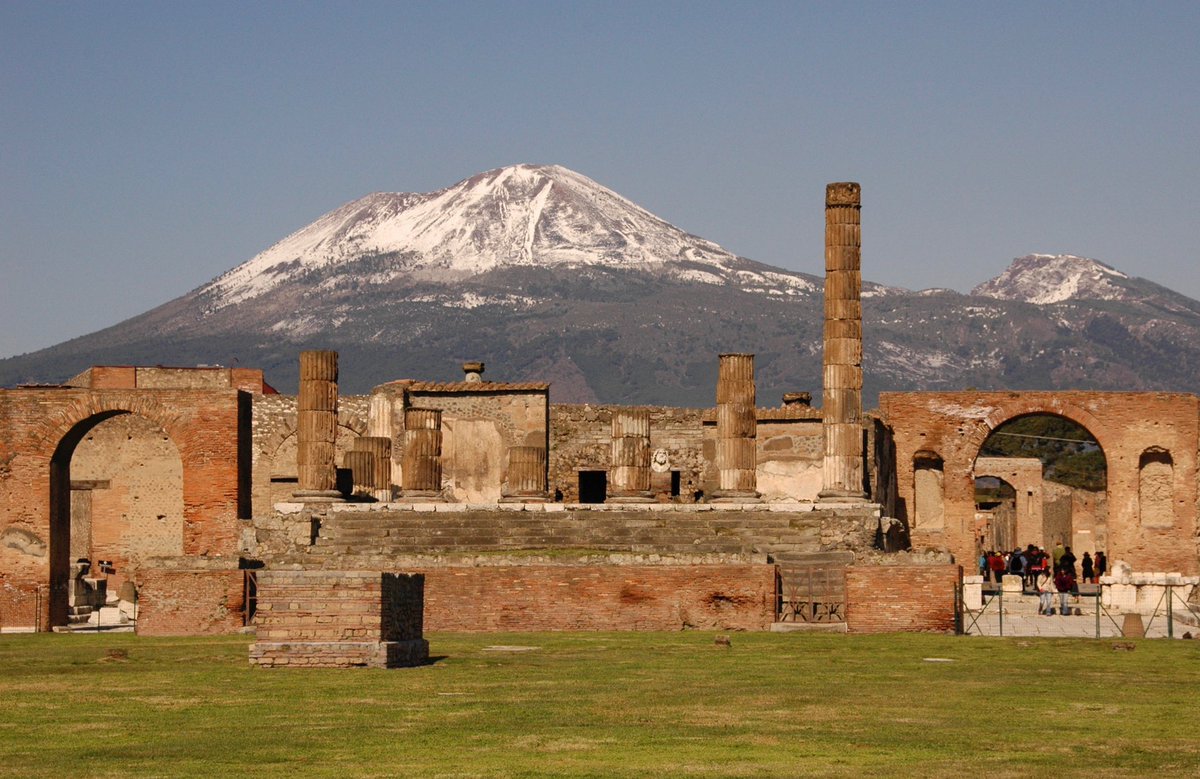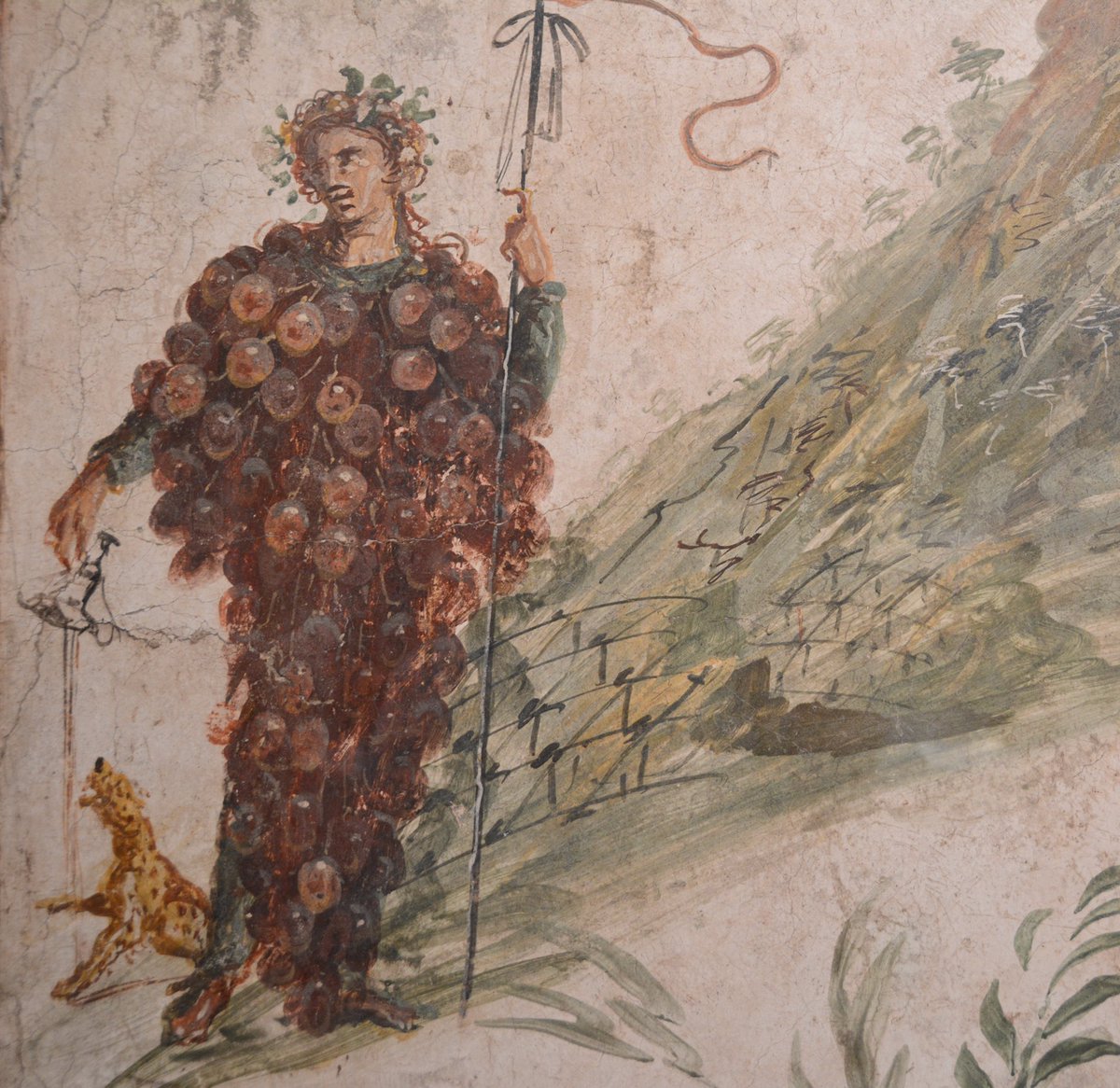
With just the façade of this house excavated in 1913, we still only have a tantalising glimpse as to its owner: M. Fabius Ululitremulus. He owned a fullonica (tannery) and the playful and brightly coloured chess board decoration may hint at his sense of fun. #ThrowbackThursday 

There is a graffito on the façade and it is a word play on the first line of Aeneid: ‘Fullones ululamque cano, non arma virumque’ (translation: I sing of fullers and an owl, not of arms and a man). The word for owl in Latin is ‘ulula’ so it is a pun on Ululitremulus’ name. 

An owl appears in a fresco advertising Ululitremulus’ fullery where they would have treated garments with sulphur. The owl is associated with Goddess Minerva who was the patron of the fullers and in addition owls are apotropaic; warding against the evil eye so bringing good luck. 

The doorway to Ululitremulus’ residence is flanked by depictions of Rome’s founders: Romulus in full armour carrying a tropaion and Aeneas carrying his father on his back and holding the hand of his son as they flee Troy. Is Ululitremulus hinting at his own ‘Romanitas’? 





An electoral campaign notice on the façade sees Fabius Ululitremulus endorsing, together with someone called Sula (who may be from the guild of fullers or a family member), two candidates—Cuspium Pansam and Popidium Secundum—for the political office of aedile (magistrate). 

• • •
Missing some Tweet in this thread? You can try to
force a refresh




















